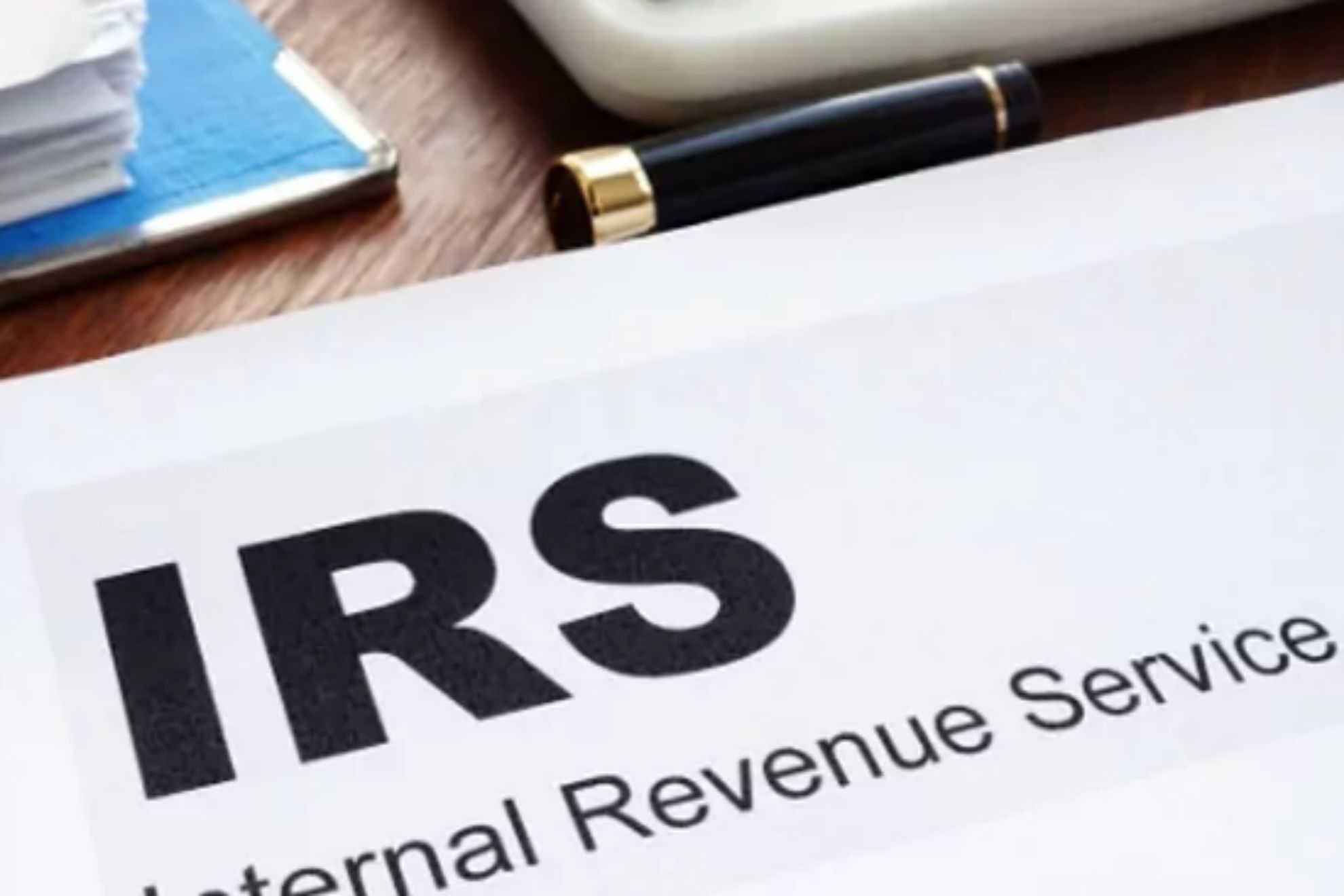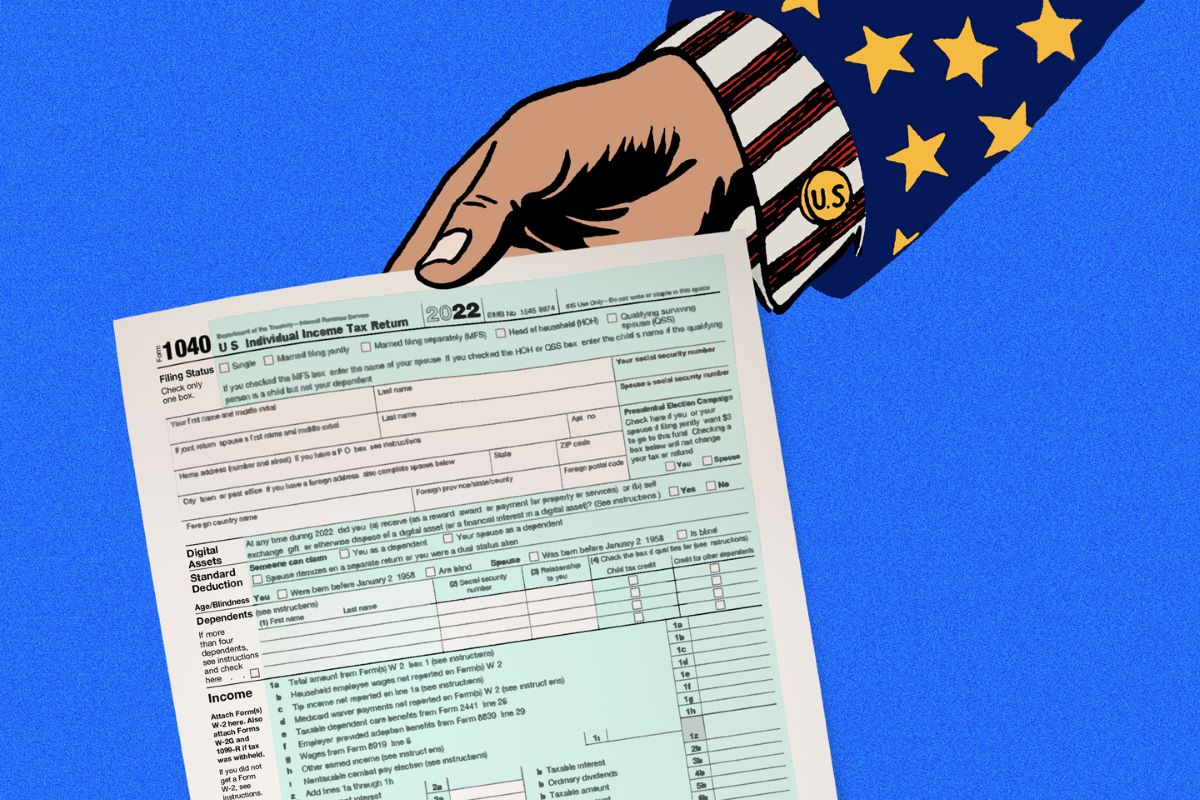

Finance
When Does The IRS Shut Down E-Filing In 2022?
Published: November 1, 2023
Find out when the IRS will stop accepting e-filing for tax year 2022. Stay informed with the latest updates on IRS e-filing deadlines and ensure your finances are in order.
(Many of the links in this article redirect to a specific reviewed product. Your purchase of these products through affiliate links helps to generate commission for LiveWell, at no extra cost. Learn more)
Table of Contents
Introduction
The Internal Revenue Service (IRS) is responsible for overseeing the collection of taxes in the United States. With the advancement of technology, the IRS has implemented electronic filing (e-filing) as a convenient and efficient method for individuals and businesses to submit their tax returns. However, there are certain periods during which the IRS temporarily shuts down the e-filing system.
In this article, we will explore the IRS e-filing shutdown dates for 2022 and discuss the reasons behind these shutdowns. Whether you are an individual taxpayer or a tax professional, understanding these shutdown periods is crucial for planning and preparing your tax filings.
It is important to note that e-filing shutdowns do not mean that taxpayers cannot file their taxes during these periods. Instead, they signify a temporary interruption in the IRS’s ability to process e-filed returns and issue refunds. Let’s delve deeper into why it is important to be aware of these shutdown dates.
Overview of IRS e-filing
IRS e-filing is a digital method for taxpayers to submit their tax returns electronically, rather than through traditional paper filing. E-filing offers numerous benefits, including faster processing times, greater accuracy, and the option to receive refunds via direct deposit.
When taxpayers e-file their returns, the information is securely transmitted to the IRS electronically. This eliminates the need for manual paper processing and reduces the likelihood of errors or data entry mistakes. As a result, e-filing generally leads to faster processing times and quicker refunds for those eligible.
In recent years, e-filing has grown significantly in popularity. According to the IRS, over 150 million individual tax returns were e-filed in the last tax filing season. This represents a substantial increase compared to the number of paper returns received.
Furthermore, e-filing offers various options for taxpayers to ensure the accuracy of their returns. Many tax software programs provide built-in error-checking features that flag potential mistakes or missing information before submission. This helps taxpayers catch errors and avoid delays or penalties due to inaccuracies.
In addition to individual taxpayers, businesses, tax-exempt organizations, and certain tax professionals are also required to e-file their returns in certain circumstances. E-filing provides a streamlined process for these entities and reduces the administrative burden associated with paper filing.
Overall, IRS e-filing is a convenient and efficient way for taxpayers to submit their tax returns and receive refunds. However, it is essential to be aware of the e-filing shutdown dates to avoid any potential disruption to the submission and processing of returns.
Importance of Knowing the Shutdown Dates
Understanding the IRS e-filing shutdown dates is crucial for both individual taxpayers and tax professionals. Here’s why:
1. Planning ahead: By knowing the shutdown dates in advance, taxpayers can plan their tax filing schedule accordingly. They can ensure they have all the necessary documents and information ready before the shutdown period, reducing the likelihood of last-minute stress and potential errors.
2. Avoiding processing delays: During the IRS e-filing shutdown, returns cannot be processed, and refunds cannot be issued. By being aware of these dates, taxpayers can adjust their expectations and avoid frustration if their refund is delayed due to the shutdown.
3. Meeting filing deadlines: The IRS imposes deadlines for tax filing. It is important to note that the e-filing shutdown does not extend these deadlines. By knowing the shutdown dates, taxpayers can ensure they file their returns in a timely manner to avoid late filing penalties or interest charges.
4. Maximizing refund opportunities: For taxpayers expecting a refund, knowing the shutdown dates helps them plan accordingly. They can file their returns early, ensuring that their refund is processed as soon as possible once the e-filing system is back online.
5. Adhering to client expectations: Tax professionals who assist clients with their filing obligations need to stay informed about the shutdown dates. This enables them to communicate effectively with their clients, manage expectations, and plan their workload accordingly.
6. Gathering necessary support: Taxpayers or tax professionals may need to contact the IRS for support or clarification during the filing process. It is important to be aware of the shutdown dates to avoid any frustration caused by the unavailability of IRS assistance during those periods.
By understanding and keeping track of the IRS e-filing shutdown dates, taxpayers and tax professionals can proactively manage their tax filing process and minimize any potential disruptions or delays. This knowledge allows for better planning and ensures a smoother tax season experience.
Factors Affecting IRS E-Filing Shutdown
The IRS e-filing shutdown periods are influenced by several factors. Understanding these factors can provide insight into why these shutdowns occur. Here are some of the key factors affecting IRS e-filing shutdown:
System Maintenance: The IRS periodically performs system maintenance to ensure the smooth functioning and security of the e-filing system. This maintenance involves updates, enhancements, and testing of the system to address any potential vulnerabilities. During these periods, the e-filing system may be temporarily shut down to allow for the maintenance activities to take place.
Security Enhancements: The IRS takes data security seriously and continuously works to improve the protection of taxpayer information. Occasionally, the e-filing system may require additional security enhancements or updates to safeguard against emerging threats. These security-related shutdowns are necessary to implement the necessary measures and ensure the integrity of the e-filing system.
Preparation for Tax Season: Prior to the start of each tax season, the IRS may need to make preparations and updates to the e-filing system. This includes incorporating changes in tax laws, updating tax forms and schedules, and testing the system’s functionality. The shutdowns during this period are intended to facilitate these preparations, ensuring that the e-filing system is ready to accept tax returns for the upcoming tax season.
Unforeseen Circumstances: In some cases, unexpected events or circumstances may necessitate an e-filing shutdown. This could be due to system malfunctions, natural disasters, cybersecurity incidents, or other unforeseen factors. The IRS prioritizes the security and reliability of the e-filing system and takes appropriate measures to address any issues promptly.
It is important to note that the IRS strives to minimize the impact of e-filing shutdowns on taxpayers and tax professionals. They typically schedule these shutdowns during periods of lesser filing activity and provide ample notice to taxpayers and tax professionals alike.
By understanding the factors that influence e-filing shutdowns, taxpayers and tax professionals can appreciate the importance of these periods and the reasons behind them. This knowledge allows for better planning and preparation to ensure a smooth tax filing experience.
IRS E-Filing Shutdown Dates for 2022
For the 2022 tax season, the IRS has announced several e-filing shutdown dates. It is essential for taxpayers and tax professionals to be aware of these dates to plan their tax filing activities accordingly. Here are the IRS e-filing shutdown dates for 2022:
- January 1- January 15: The e-filing system will be temporarily shut down at the beginning of the year to allow for system maintenance and preparation for the tax season. During this period, taxpayers will not be able to submit their returns electronically.
- May 21- May 23: Another e-filing shutdown is scheduled in May. This period is usually marked by system enhancements and updates to maintain the security and functionality of the IRS e-filing system.
- June 25- July 4: During the end of June and the beginning of July, the e-filing system undergoes a temporary shutdown. This period allows for additional system maintenance and preparation for the upcoming tax year.
- November 18- November 20: As the tax year comes to a close, the IRS prepares for the upcoming tax season by performing necessary system updates and maintenance. During this period, electronic filing will be temporarily unavailable.
It is important to note that these dates are subject to change, and the IRS may provide updates or additional shutdown periods as needed. Taxpayers and tax professionals are encouraged to regularly check the IRS website or subscribe to IRS communications for the most up-to-date information on e-filing shutdown dates.
During these shutdown periods, taxpayers can still prepare their returns using tax software, but they will need to wait until the e-filing system is back online to submit their returns electronically. Alternatively, taxpayers can choose to file their returns on paper during the shutdowns, which may result in longer processing times.
By being aware of the IRS e-filing shutdown dates for 2022, taxpayers and tax professionals can plan their tax filing activities accordingly and ensure a smooth and timely submission of their tax returns.
Impact of Shutdown on Taxpayers and Tax Professionals
The temporary shutdown of the IRS e-filing system can have various impacts on taxpayers and tax professionals. Understanding these effects is crucial for planning and managing tax filing activities. Here are some of the impacts the shutdown can have:
1. Delayed Processing and Refunds: One of the primary impacts is the potential delay in the processing of tax returns and the issuance of refunds. During the e-filing shutdown, the IRS is unable to process electronically filed returns. As a result, taxpayers may experience longer processing times and delays in receiving their refunds. It is important to factor in these potential delays when expecting a refund or planning financial obligations.
2. Increased Paper Filing: During the e-filing shutdown, taxpayers who originally planned to electronically file their returns may be required to resort to paper filing. This can increase the administrative burden and may lead to longer processing times. Tax professionals may also need to adjust their processes and allocate additional resources to handle paper returns during the shutdown period.
3. Limited Access to IRS Services: The e-filing shutdown typically extends to other IRS services as well. Taxpayers and tax professionals may experience limited availability of online tools, resources, and customer support during this period. It is important to plan for potential delays in receiving assistance or accessing information from the IRS.
4. Disruption in Tax Planning: Tax professionals who rely on the e-filing system may face disruptions in their tax planning activities. The inability to electronically file returns and receive quick feedback from the IRS can complicate tax planning strategies that require real-time calculations or immediate responses. Tax professionals may need to adjust their timelines and make alternative arrangements during the shutdown period.
5. Increased Workload after the Shutdown: Following the e-filing shutdown, there is often a backlog of returns that need to be processed by the IRS. This can lead to a higher volume of work for tax professionals once the e-filing system resumes. Taxpayers may also experience longer wait times for responses or updates on their filed returns. It is important to anticipate potential delays and plan for additional processing time once the shutdown period ends.
While the e-filing shutdown can pose challenges for taxpayers and tax professionals, it is important to remain patient and flexible during these periods. By understanding the potential impacts and planning accordingly, taxpayers and tax professionals can navigate through the shutdown with minimal disruption and ensure a smooth tax filing experience.
Alternatives During the E-Filing Shutdown
During the IRS e-filing shutdown, taxpayers and tax professionals still have several alternatives to consider. These alternatives can help mitigate any disruptions and ensure a timely submission of tax returns. Here are some options to consider:
1. Paper Filing: While the e-filing system is temporarily unavailable, taxpayers can choose to file their returns on paper. Paper filing involves preparing physical copies of the necessary tax forms, including all relevant documents and supporting evidence. Although paper filing may be more time-consuming and require additional effort, it allows taxpayers to fulfill their filing requirements during the e-filing shutdown.
2. Utilize Authorized e-file Providers: In certain situations, taxpayers may still be able to e-file their returns even during the IRS e-filing shutdown. This is possible through authorized e-file providers who have special permissions to submit tax returns to the IRS. Taxpayers should consult with these authorized providers to determine if this option is available to them.
3. Seek Assistance from Tax Professionals: Tax professionals can be valuable resources during the e-filing shutdown. They are well-versed in tax laws and regulations and can guide taxpayers through the alternative filing methods. Tax professionals can help ensure accurate preparation of tax returns and provide guidance on the most appropriate filing method, whether it be paper filing or utilizing authorized e-file providers.
4. Stay Informed and Plan Ahead: Keeping abreast of updates from the IRS is crucial during the e-filing shutdown. Taxpayers and tax professionals should regularly visit the IRS website, subscribe to IRS communications, or consult with experienced tax advisors to stay informed about any changes to the e-filing shutdown dates or available alternatives. By planning ahead and staying informed, taxpayers can navigate through the shutdown period more effectively.
5. Monitor IRS Services Resume: It is important to monitor the IRS announcements regarding the resumption of e-filing services. Once the e-filing system is back online, taxpayers should promptly submit their returns electronically, or consult with their tax professionals to ensure timely filing.
While the e-filing shutdown may present some challenges, taxpayers and tax professionals have alternative options to ensure compliance with tax filing requirements. By exploring these alternatives and seeking guidance when needed, individuals can successfully navigate through the shutdown period and fulfill their tax obligations.
Conclusion
The IRS e-filing shutdown dates for 2022 have important implications for both taxpayers and tax professionals. Understanding these shutdowns and their impacts is crucial for successful tax planning and compliance. By being aware of the shutdown dates, individuals can effectively prepare for potential delays in processing and refunds, adjust their filing strategies, and explore alternative options available during the shutdown periods.
IRS e-filing offers numerous benefits, including faster processing times, increased accuracy, and the convenience of receiving refunds via direct deposit. However, during the temporary shutdowns, taxpayers may need to rely on paper filing or authorized e-file providers to fulfill their filing requirements. Tax professionals play a vital role in guiding taxpayers through these alternatives and ensuring accurate and timely tax submissions.
It is important for taxpayers and tax professionals to monitor IRS communications and remain informed about updates regarding the e-filing shutdowns. Staying proactive and planning ahead can help mitigate any potential disruptions and ensure a smooth tax filing experience.
In conclusion, understanding the IRS e-filing shutdown dates, the reasons behind them, and the available alternatives allows taxpayers and tax professionals to navigate through the tax season effectively. By staying updated, planning ahead, and seeking guidance when needed, individuals can fulfill their tax obligations successfully and avoid unnecessary complications during the e-filing shutdown periods.














